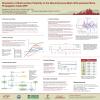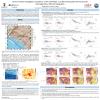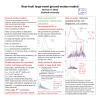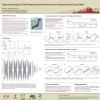Poster #213, Ground Motions
Using historical intensity data to assess hazard map performance in California and beyond
Poster Image:

Poster Presentation
2020 SCEC Annual Meeting, Poster #213, SCEC Contribution #10569 VIEW PDF
Historical seismic intensity data are useful for myriad reasons, including assessment of the performance of Probabilistic Seismic Hazard Assessment (PSHA) models and corresponding hazard maps by comparing their predictions to a dataset of historically observed intensities in the region. To assess PSHA models for California, a long and consistently interpreted intensity record is necessary. Such a record has not previously been available, but recently the California Historical Intensity Mapping Project (CHIMP) has compiled a dataset that combines and reinterprets intensity information that has been stored in disparate and sometimes hard-to-access locations (Salditch et al., 2020). The CHIMP dataset also includes new observations of intensity from archival research and oral history collection. Version 1 of the dataset includes 46,502 intensity observations for 62 earthquakes with estimated magnitudes ranging from 4.7 to 7.9. This data set, spanning 162 years, reveals that estimated maximum shaking throughout California has been lower than expected from seismic hazard models. This discrepancy is reduced, but persists, if historical intensity data for the largest earthquakes are smoothed to reduce the effects of spatial under-sampling. Possible reasons for this discrepancy include 1) other limitations of the CHIMP dataset, for example the omission of most earthquakes smaller than Mw 6; 2) systematic biases in the hazard models, and 3) the possibility that California seismicity throughout the historical period has been lower than the long-term average. Similar discrepancies between observed and predicted shaking have been documented for Italy and Japan (Stein et al., 2015; Brooks et al., 2016); we show preliminary analysis suggesting a similar result for Nepal. Taken at face value, these studies suggest that hazard could be systematically overestimated by modern PSHA.



















































